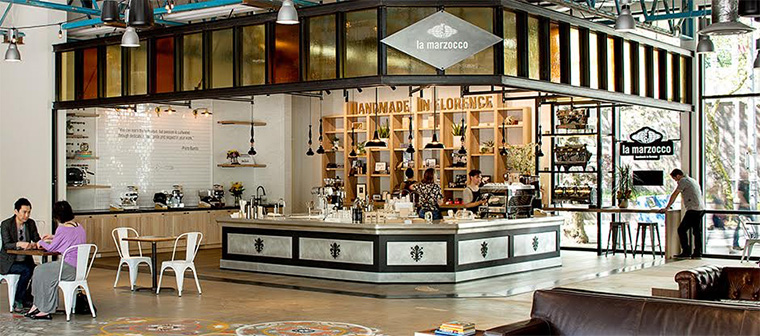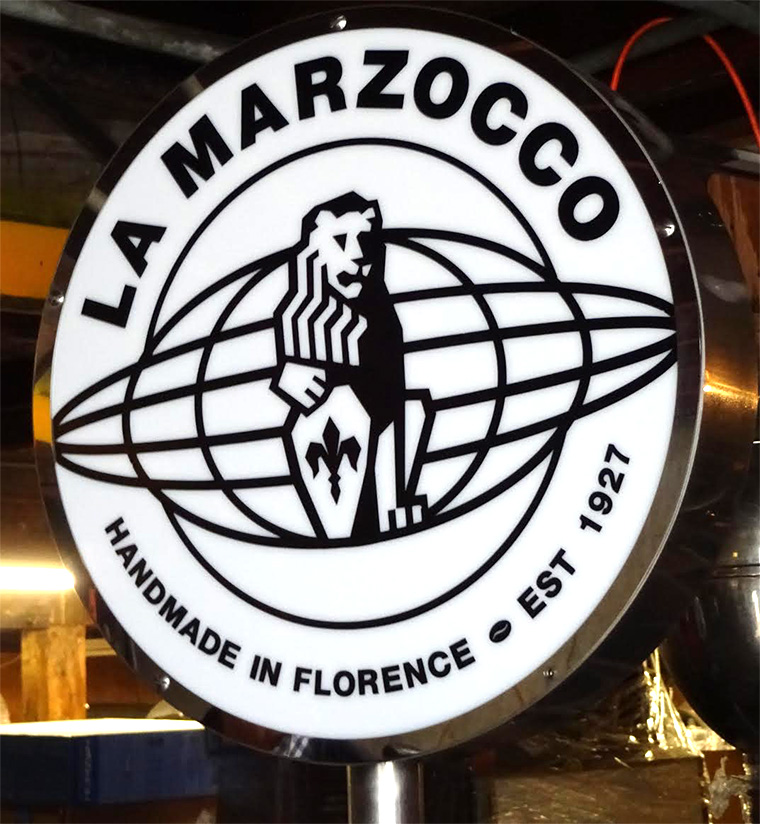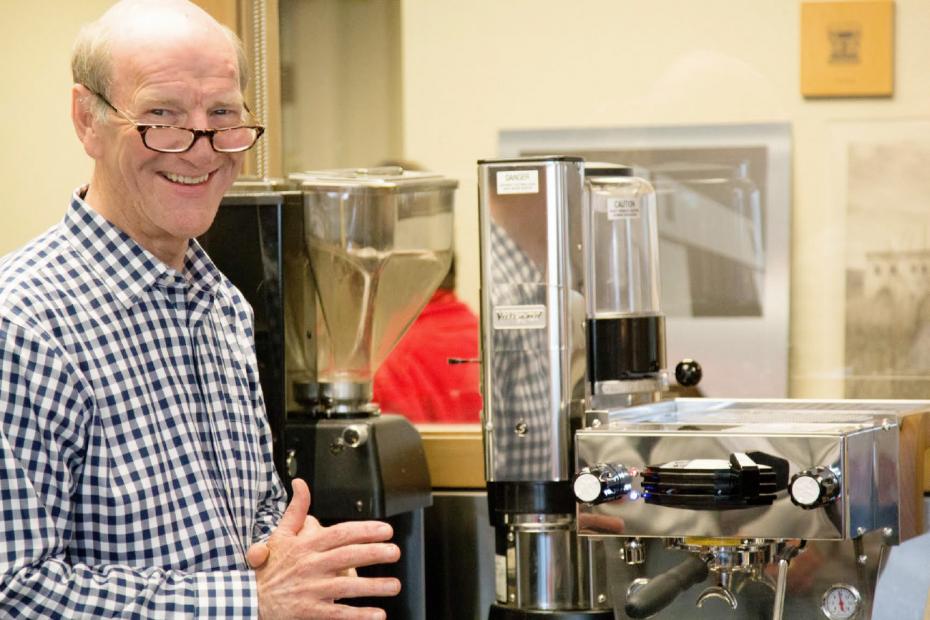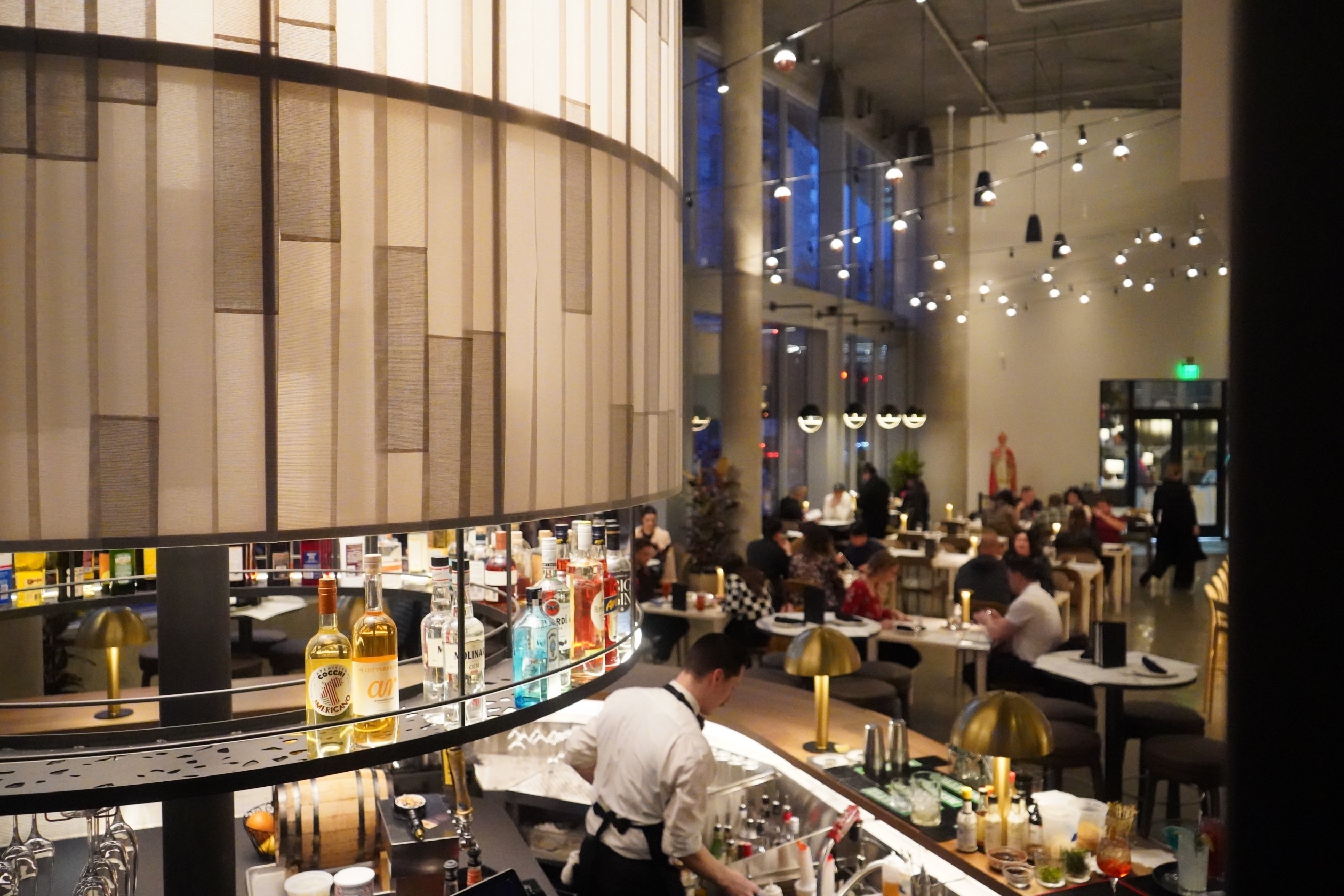If you are a coffee aficionado, you’ve heard of La Marzocco. A hands-down favorite among baristas, these high-end espresso machines can be found in cafés and restaurants worldwide. The venerable company, founded in Florence in 1927 by Giuseppe and Bruno Bambi, still manufactures its machines in Italy but its headquarters are in Seattle, thanks to the foresight of CEO Kent Bakke.
In the mid-1970s, fresh out of college, Bakke and a few friends began importing La Marzocco machines to the U.S. When the specialty coffee industry boomed in the mid-1990s, much of it fueled by another Seattle company known as Starbucks, Bakke was well-positioned. He and a group of investors acquired 90 percent of La Marzocco in 1994. Last year, the company built 12,000 machines, selling them in 80 countries. Recently, we took a tour of the Seattle showroom with Bakke, who shared more about the company’s history with us.
How did you first meet the Bambi brothers?
In 1977, some friends and I bought a sandwich shop in Seattle’s Pioneer Square. In the back was an old vertical-boiler brass espresso machine. I love tinkering with things. I cleaned it up and got it to work, and one of my friends said: What do you think about importing and selling these machines? So we went to Italy. In Florence, we met the Bambi family who agreed we could sell their machines in Seattle.

That sounds like quite a gamble. What happened next?
It took us one year to sell the first machine in the U.S. Basically, people had no idea what we were talking about. We called them “cappuccino machines” because people seemed more familiar with that term. In the first 10 years, we sold in only four states: Washington, Oregon, Alaska and Idaho. We did everything back then: import, sell, install, train and fix the machines.
How did La Marzocco get its start?
In the 1920s, Giuseppe, a brass artist in Florence, who commissioned to build a dozen espresso machines but the customer who placed the order had trouble selling them. Giuseppe saw their potential, though, and asked his brother Bruno to team up to build and sell the machines. The brothers are very proud of their city and named their first machine “La Marzocco” after Donatello’s famous sculpture of a seated lion, the symbol of Florence.
Before World War II, espresso machines used vertical boilers with big filters. In 1939, the Bambi brothers turned the machine on its side and got a patent for the first horizontal espresso machine. After the war, the lever machine was invented and espresso went from a long cup to a short, more concentrated draw with the distinctive “foam” on top.

Everyone knows Starbucks started in Seattle. Did that have an effect on your business?
You can say what you want about Starbucks, but they put coffee on the map. I knew Starbucks CEO Howard Schultz early on and his company bought our products. By 1993, Starbucks was expanding and Howard needed more machines to keep up. I approached the Bambi brothers but they weren’t interested in ramping up that quickly. I asked Giuseppe if we could manufacture the machines in Seattle under license, and he said: Yes, but you have to buy the company.
At that point, we had built a solid 15-year relationship with the Bambi’s. I gathered a group of investors and we purchased a 90-percent share. For 10 years, we manufactured espresso machines in Seattle for Starbucks’ global expansion. In 2004, Starbucks moved to super-automatic espresso machines, so we closed the Seattle factory and consolidated all manufacturing in Italy. Today, our machines are made by hand outside Florence, and we employ 150 people.
What makes La Marzocco machines special?
Craftsmanship, design and detail. Most of our North American customers are coffee roasters and they sell our machines to the cafes they supply. The Linea machine, launched in 1989, is one of our all-time best sellers. We’ve sold about 50,000 over the years. The Linea Mini is the home version, available in several colors. It’s a basic machine but very high-quality. There is a big second-hand market for La Marzocco machines and they hold their value well. Most customers keep them seven to 10 years, but we have one guy in Portland, Ore., who bought a La Marzocco in 1980 and is still using it today.
What makes a good cup of coffee?
Basically, espresso machines do two things: They heat the water and they dispense it under pressure. Giuseppe’s son Piero once told me, “Do as little damage as possible to the coffee.” Coffee is an organic product. It ages, it changes, it is not the same day to day, or even batch to batch. The barista grinds the coffee, apportions it, packs it and puts it into the machine. He or she has to control the volume of water and the timing to get the most flavor out.
In April, La Marzocco opened its first concept café in Seattle. How’s that going?
Very well. We share a large space with local radio station KEXP at Seattle Center. Just as they curate music from around the world, we curate coffee. We’ll have a rotating lineup of roasters-in-residence that change monthly. We also have an Espresso Lab there where we will offer demos and classes. We want people to explore, learn and love the art of coffee-making as much as we do.






























